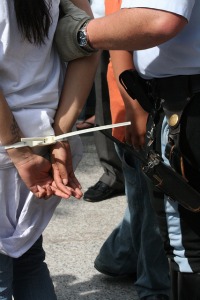Feds Sending Mixed Messages on Who Gets Deported
 The last thing you need in a heated argument is confusion and mixed messages. If we’re going to bicker we should be able to do it with the same set of facts and rules. That’s the decent thing to do.
The last thing you need in a heated argument is confusion and mixed messages. If we’re going to bicker we should be able to do it with the same set of facts and rules. That’s the decent thing to do.
We’ve been arguing about immigration for too long to remember and the one thing both sides of the argument have in common is that each feels that the system needs to be fixed. Our differences are in our definitions of fix. So far the politicians who can put us on the path to making it better have opted to leave things as they are because immigration is a wonderful wedge to drive among voters; it’s a way to get people angry enough to go to the polls. As a convenient hot button issue immigration is not broken, so why fix it?
But there are always unintended consequences. In the time that the politicos have been pushing immigration for everything it can leverage local and state governments have been making their own rules and inventing ways to apply do-it-yourself remedies.
A case in point is the deportation of criminals. I don’t think either side of the debate would defend against the deportation of an undocumented criminal. But once again we get lost in a definition.
According to a report by the Associated Press “some local law enforcement agencies, particularly in the Southeast, are turning over illegal immigrants who commit even minor offenses to federal authorities for deportation, while others are focused on deporting more violent criminals, according to a report released Monday.”
A study by the Migration Policy Institute says that the discrepancy is caused by conflicting US government messages. The MPI did a study that “focused on the 287(g) program — named for the section of federal law governing it — overseen by U.S. Immigration and Customs Enforcement. The U.S. Homeland Security Department, which includes ICE, in 2009 wrote new contracts for the local-federal partnerships and issued new guidelines telling local officers to focus primarily on illegal immigrants charged with crimes like rape, murder, robbery or drug offenses.” But, according to the AP, which was quoting the study, “top U.S. government officials — who have said the program that is in place in 71 jurisdictions nationwide can also be useful for deporting illegal immigrants when resources allow — offer a conflicting message.”
So which is it? Is the program for felons or for convenience?
That’s just the most obvious conflict. There’s another conflict that goes deeper and was only skimmed over in the AP piece. When the detained, either for misdemeanors or felonies, are deported it is on the basis of an accusation. In a country that treasures it’s right to due process, none is offered in these circumstances.
The exception is Los Angeles County. Again the AP report:
Los Angeles County is unique among the sites studied: Officials don’t check immigration status until someone is convicted of a crime. Still, some 40 percent of people detained for immigration authorities there had committed only minor offenses. On the other hand, the 10 jurisdictions with the highest percentage of people turned over to immigration authorities after committing only traffic offenses are all in the Southeast, the report said.”What we see in Los Angeles is clearly a professional approach towards public safety and law enforcement where resources are allocated and prioritized toward those that are committing serious crimes,” said Jerry Gonzales, executive director of the Georgia Association of Latino Elected Officials. “Whereas in the Southeast you see the allocation of resources to non-criminal offenses, which clearly points to a politicized environment that we live in in Georgia.”
One of the reason we need immigration reform is to organize and streamline the enforcement and impact of federal law. This study reinforces that idea.
And as an aside, notice that the states that are happily deporting people accused of misdemeanors are in the areas where cultural demographics are changing because of the Latino diaspora. Interesting.
[Photo by Nevele Otseog]
